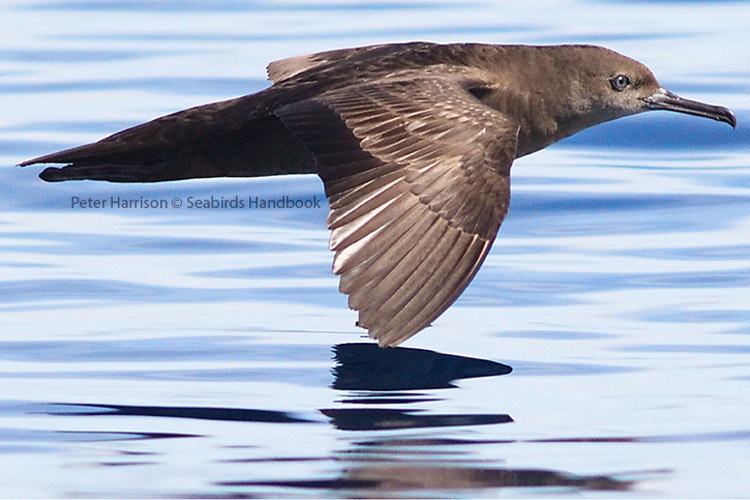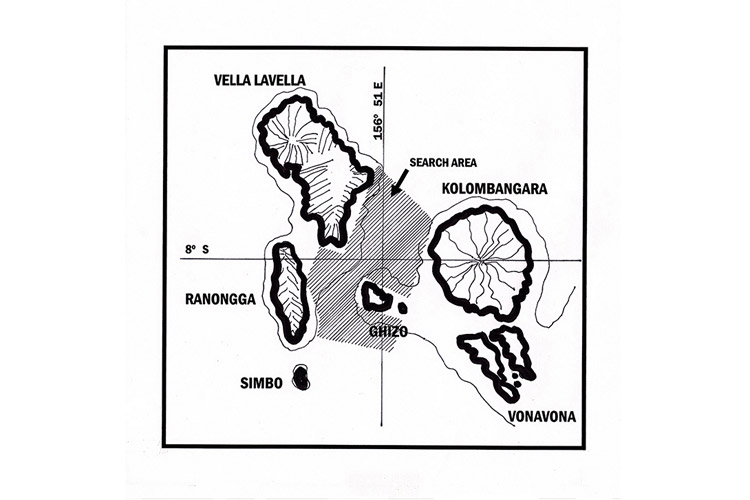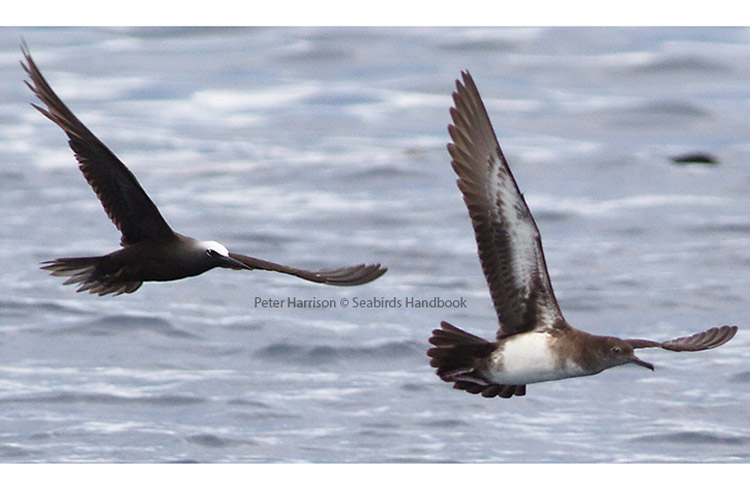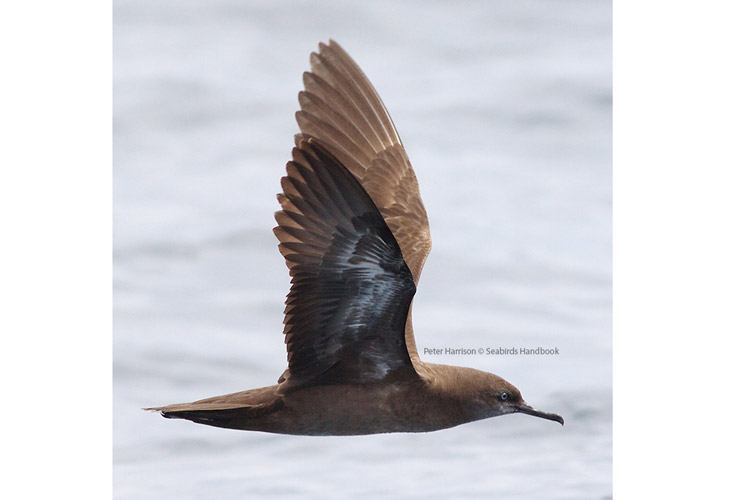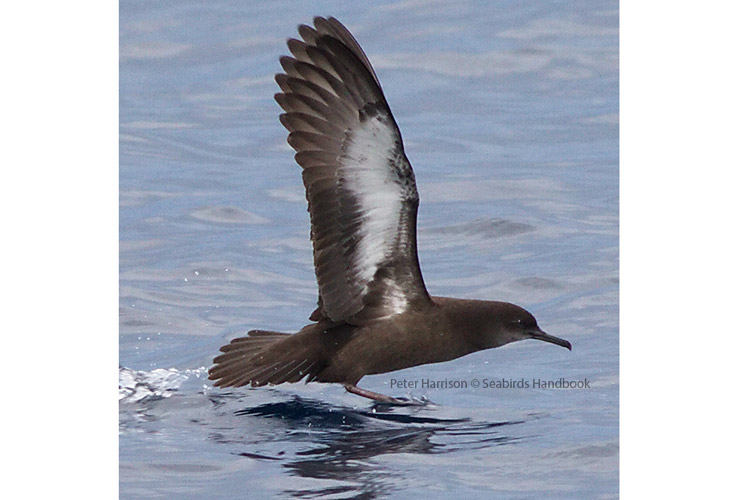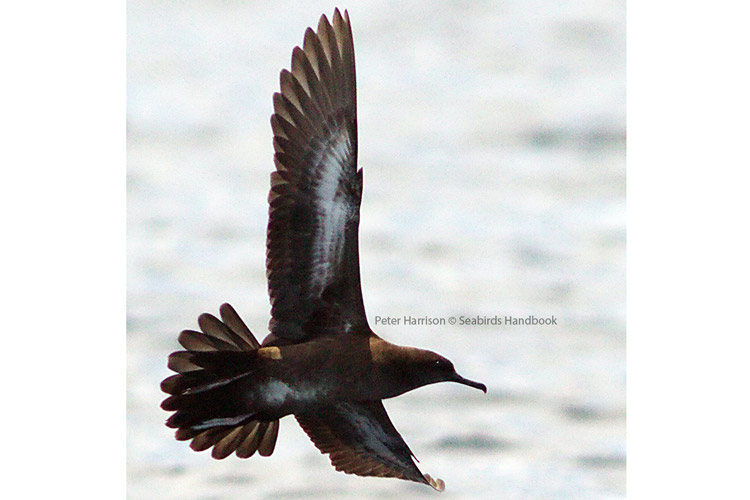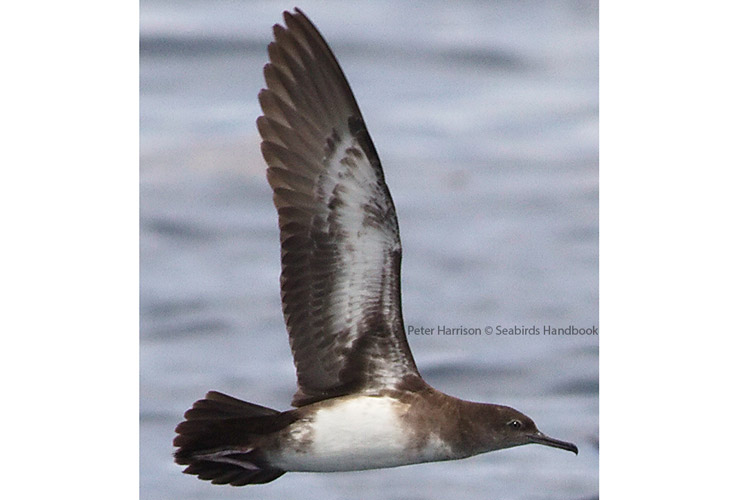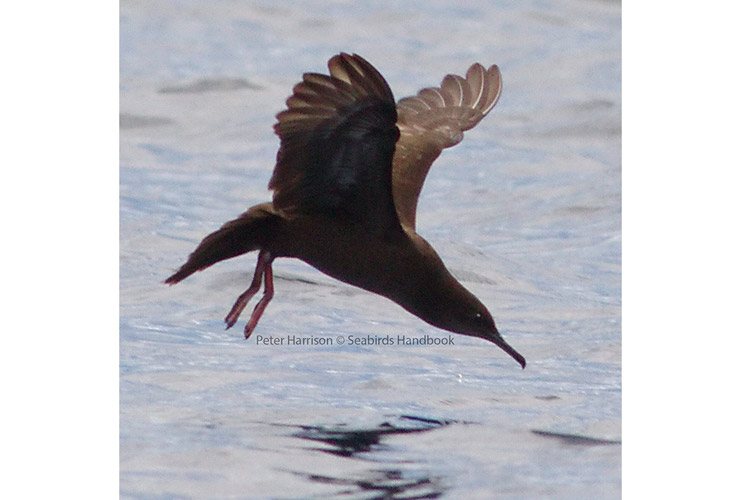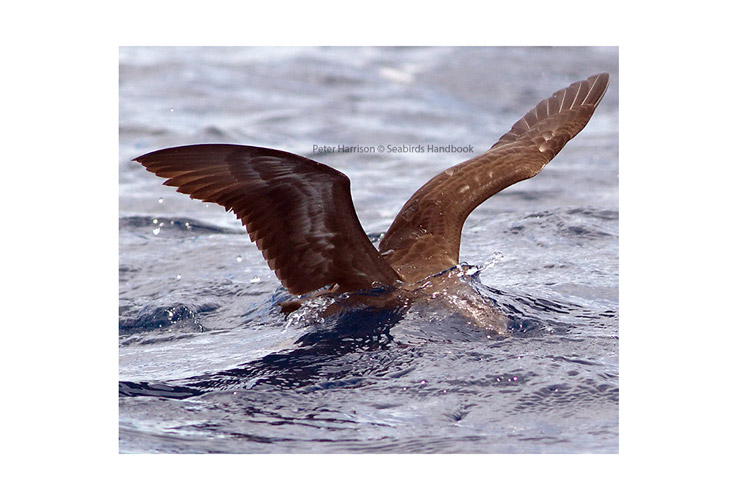Peter Harrison’s Paper on Heinroth’s Shearwaters Published in Notornis
Posted by Peter Harrison
in Americas and Of Interest
Following is a paper by Peter Harrison that was recently published in Notornis, 2014, Vol. 61: 67-72
0029-4470 © The Ornithological Society of New Zealand Inc.
At-sea observations of Heinroth’s shearwater (Puffinus heinrothi)
PETER HARRISON
Swingates, Land’s End, Penzance, TR19 7AA, United Kingdom
Abstract This paper reports recent at-sea sightings of the little-known Heinroth’s shearwater (Puffinus heinrothi) within the Solomon Islands. Feeding habits are described and compared to those of black noddy (Anous minutus). Observations suggest that Heinroth’s shearwater occurs in dark, intermediate and pale forms, and may be better considered as a polymorphic species.
Harrison, P. 2014. At-sea observations of Heinroth’s shearwater (Puffinus heinrothi). Notornis 61 (2): 67-72.
Keywords Heinroth’s shearwater; Puffinus heinrothi; Solomon Islands; plumage variation
INTRODUCTION
Heinroth’s shearwater (Puffinus heinrothi; Fig. 1) is a poorly known species of seabird. The type specimen, a fledgling male, was described by Oskar Heinroth (1871-1945), secretary of the Deutsche Ornithologische Gesellschaft, from a specimen collected at Blanche Bay, New Britain, on 27 May 1901 (Heinroth 1902). However, his description carried no specific name. When Reichenow (1919) provided a name in 1919, he honored Heinroth (Brooke 2004). This rare and virtually unknown species had been previously considered a subspecies of Audubon’s shearwater (P. lherminieri) (e.g., Warham 1990) or sometimes even a form of the little shearwater (P. assimilis) (del Hoyo et al. 1992).
Heinroth’s shearwaters are small, mostly dark petrels with a long, slender bill and a body length of 27 cm. Wingspan and weight of adults is unknown, the type specimen being a starving fledgling male weighing just 82 g. The breeding ecology is unknown as no egg or nest has ever been found. They are suspected to breed in the Bismarck Archipelago, Arawa (Bougainville group), Rendova and Kolombangara (Solomon Islands) and possibly New Britain, where they were collected at Watom Island (Murphy 1930), but there are no recent records. It has recently been seen and reliably identified off eastern Sulawesi in Indonesia (http://ibc.lynxeds.com/species/heinroths-shearwater-puffinus-heinrothi) where it is presumed to disperse after breeding. The population size is estimated to be a few hundred (350-1500 individuals) (BirdLife International 2013 list the species as Vulnerable). A recently fledged bird was found in August 1979 at Arawa, Bougainville Island. In July 1980, an adult was captured at Panguna and it is suspected to breed in the Crown Prince Range (Hadden 1981). This is supported by a number of recent sightings in the seas around Bougainville, including one flock of 250 birds between Buka and Kieta (Coates 1985). Descriptions of the species at sea, however, remain poorly documented, with a few digital images presently published appearing small, distant, and somewhat blurred. Most recent descriptions (Cheshire 2010; Onley & Scofield 2007) refer to the species as being small with a distinctive long and slender bill. The plumage is considered to be variable (Harrison 1983) with most individuals being mainly sooty-brown except for a central white underwing panel and an indistinct, whitish belly patch; however, photos of birds with apparently entirely dark bellies have been taken at sea (R.P. Scofield, pers. comm.). No information has been published on its feeding habits (del Hoyo et al. 1992). In this study, I report recent at-sea sightings of this species and observations on its plumage variaton and feeding biology.
METHODS
While researching seabirds in the Solomon Islands and New Britain between 1986 and 2012, plumage differences were noticed in many individual Heinroth’s shearwaters that seemed unlikely to be due only to distance or the prevailing viewing conditions. Based on these previous sightings (pers. obs.), an expedition was organised to an area in which, over the years, I had consistently seen small numbers of Heinroth’s shearwaters from the decks of expedition vessels such as the MV Clipper Odyssey and the MV World Discoverer. The 6-day 2013 expedition was based in the New Georgia group, Solomon Islands, and took place to the south and west of Kolombangara Island (elevation 1768 m), from 20 to 25 March. A small inshore fishing craft was used to run transects and chumming spots along island drop-offs, channels and flotsam lines off Kolombangara, Ghizo, Ranongga and Simbo islands (Fig. 2). Seabirds are known to be attracted to feeding schools of tuna (Ashmole & Ashmole 1967) and all mixed-species flocks of seabirds feeding over tuna schools were approached and carefully scrutinised. Once Heinroth’s shearwaters were sighted, chum (fish scraps placed in a floating onion bag and tethered to our craft) was deployed to attract them. Foraging activity was noted plus variations in plumage of individual birds, and these were recorded using 2 Canon camera systems: EOS 1D coupled to Canon EF400 mm 1:4 DO IS lens, and EOS 7D coupled to Canon EF400 mm 1:5.6 lens. Images were generally obtained using AV mode set to 1,200 s-1 at 640 ISO. Birds were photographed over schools of skipjack tuna (Katsuwonus pelamis), at chum slicks, weed and flotsam lines, and commute flights over the ocean, generally at distances of < 30 m.
RESULTS
During the 2013 expedition, within the immediate area south and west of Kolombangara Island, Heinroth’s shearwaters were found in flocks of 1-25 birds. They freely associated with black noddies (Anous minutus), resting, commuting and feeding alongside them. Both species appeared to be obligate attendees of skipjack tuna schools where numbers of Heinroth’s shearwater were observed to exceed 100 individuals (pers. obs.). Heinroth’s shearwaters also fed alone, particularly along flotsam and jetsam lines, and were particularly attracted to lone floating coconuts which they appeared to use as fish-attracting-devices.
At sea, in low wind conditions, Heinroth’s shearwaters appear only slightly larger than a black noddy (Fig. 3) but with a longer wing-arm and broader, more rounded wing-tip. Under such conditions the commute flight is low and direct and consists of bursts of rapid wing-beats interspersed with short periods of gliding, the wings held bowed or horizontal with both tips parallel to and less than a meter above the water’s surface. In wind speeds above 20 knots flight becomes steeper with birds rising and falling between bursts of rapid wing-beats and shearing glides. The overall impression is of a small, long-bodied and rather short-winged shearwater with a distinctive long, slender bill and mostly dark plumage. When sitting in rafts during loafing spells (often within flocks of black noddies), Heinroth’s shearwaters sit low in the water and almost always on the perimeter of a noddy or mixed-species flock. They appear somewhat small-headed with a distinctive long, slender bill, a short neck, and an elongated, low body tapering to a blunt point with wing and tail of almost equal length.
Heinroth’s shearwaters were seen on all 6 days of the expedition, usually 50-60 individual birds per day, with a peak of over 100 birds on 23 March off Simbo Island. Observations confirmed earlier (1986-2012) suspicions that Heinroth’s shearwaters in the New Georgia group are not simply variable in plumage but occur in 3 colour morphs: dark (which make up c. 60% of observations), intermediate (c. 30%) and pale (c. 10%). All 3 forms have a slender, blackish bill with pinkish legs and feet; the iris is pale hazel-blue with a darker pupil. A few birds are intermediate between the 3 colour morphs. Dark morphs (Fig. 4) are generally sooty-brown all over with little or no white on chin, throat or underparts. The white on the central underwing is restricted to a small area at the base of the primaries and outer secondaries, although in some birds the underwing appears wholly dark. Intermediate morphs (Fig. 5) are similar in all respects to dark forms except for a pronounced white central panel to the underwing that extends from the primary coverts across the secondary coverts; there is a narrow, dark leading margin to the underwing and a pronounced, broad, dark margin to the trailing edge of the wing formed by the all-dark secondaries. A short, dark diagonal bar crosses the axillaries. Under optimal viewing conditions a diffuse, white lower-belly patch was visible in some birds (Fig. 6). Pale morphs (Fig. 7) are strikingly different than both dark and inter-mediate forms, with the lower neck and throat being paler, mottled with white, and merging into predominantly white underparts. The flanks, thighs and undertail coverts are dark. The underwing is as in intermediate forms, showing a white central panel and broad, dark trailing edge.
The 2013 observations confirmed previous sightings (pers. obs.) that Heinroth’s shearwaters often join mixed species feeding flocks, especially over schools of feeding skipjack tuna. They also forage along flotsam and jetsam lines where they usually occur singly. Over skipjack tuna schools, Heinroth’s shearwaters often “pitch” headfirst into the water from heights of several meters (Fig. 8) or belly-flop down to the surface. Upon contact with the water the head is immediately immersed, with wings raised and slightly extended, the legs kicking for propulsion; the bird then “ploughs” forward through the ocean surface film (Fig. 9). This feeding method recalls that of a fluttering shearwater (P. gavia; C. Gaskin, pers. comm.). Only rarely do Heinroth’s shearwaters completely submerge, and then only for durations of 1-4 seconds. At floating coconuts, Heinroth’s shearwaters seem to purposefully station themselves 1-3 m from the drupe and wait for sign of movement as small-fry are attracted to take refuge in its shadow. Once prey is sighted, the head is submerged and the bird “ploughs” forward through the surface film as described above, the head and bill darting to left and right, snatching at prey.
DISCUSSION
At long range separation of Heinroth’s shearwater from black noddy can be surprisingly difficult. Both can appear wholly dark and separation is best based on overall body shape and flight differences: Heinroth’s shearwaters execute low, parallel glides between rapid, quick-fire bursts of wing action while black noddies beat their wings continuously during flight with little or no gliding. At close range the white caps of noddies and constant flicking flight are usually obvious. When loafing together in rafts on the ocean, the slight size difference is of little value in separation of the 2 species. However, the body shape in flight is distinctly different: Heinroth’s shearwater has a low, log-like, small-headed appearance, whereas the black noddy holds its head high with a long, pointed “stern”. This is a surprisingly good field character, and, with experience, allows astute observers to quickly find even a single Heinroth’s shearwater from within a flock of resting noddies at ranges in excess of a kilometer. Feeding action is also distinctly different. Foraging Heinroth’s shearwaters appear as “headless” birds ploughing through the surface film (Fig. 9). In contrast, black noddies hover over the ocean before dipping down to pick prey from the ocean surface.
In addition to studying the feeding habits of Heinroth’s shearwaters, observations during the 2013 expedition allowed close scrutiny of plumages and showed individual variation greater than would be normally expected. Individuals could be grouped into dark forms (60%), intermediate forms (30%) and pale forms (10%). Interestingly, the majority of field guide descriptions suggest that most Heinroth’s shearwaters possess a pale belly patch (Onley & Scofield 2007). This might be evident in museum specimens, but was only seen in a small proportion of birds (c. 30%) during the 2013 expedition, despite birds being observed at extremely close range. Indeed, even birds that had pronounced white underwing panels (Fig. 5) showed little or no white central belly patch. Belly colour proved to be a highly variable feature. It may be that dark-morph birds in fresh plumage have wholly dark bellies but with wear the dark feather tips abrade to reveal white bases. This occurs, for instance, in Pterodroma (macroptera) gouldi (R.P. Scofield, pers. comm.). Underwing colour also varied, with the central underwing ranging from almost wholly dark to obviously white. The pale forms (Fig. 7), with largely white underparts, recalled Audubon’s shearwater but head including chin, throat and upper breast, were dark to give a distinct, hooded appearance. The underwing also shows a distinct, broad, dark margin to the trailing edge and mostly dark axillaries (white in Audubon’s shearwater).
CONCLUSION
Due to their low flight path, with wings often parallel to the ocean surface, the underwing and belly areas of Heinroth’s shearwaters are often difficult to view. Under such conditions birds can appear completely dark on the underwing and belly. In higher wind conditions flight becomes steeper with shearing glides that may briefly provide views of both underwing and belly surfaces. Under these optimum conditions it was observed that plumage variation was extensive with dark, intermediate and pale forms. Heinroth’s shearwaters are best looked-for in shallow, offshore water, along drop-offs and tide-rips, and especially over schools of skipjack tuna where they freely associate with black noddies.
ACKNOWLEDGMENTS
Thanks to R.P. Scofield, N. Cheshire, A. Tennyson, and C. Gaskin for helpful comments and suggestions during the preparation of this article.
LITERATURE CITED
Ashmole, N.P.; Ashmole, M.J. 1967. Comparative feeding ecology of seabirds of a tropical oceanic island. Peabody Museum of Natural History 24: 1-131.
BirdLife International. 2013. Species factsheet: Puffinus heinrothi. Downloaded from http://www.birdlife.org on 5 February 2014.
Brook, M. 2004. Albatrosses and petrels across the world. Oxford: Oxford University Press.
Cheshire, N. 2010. Procellariiformes observed around Papua New Guinea including Bismarck Archipelago from 1985 to 2007. South Australian Ornithologist 36: 9-24.
Coates, B.J. 1985. The birds of Papua New Guinea, 1: non-passerines. Alderley, Australia: Dove.
Del Hoyo, J.; Elliot, A.; Sargatal, J. (eds.) 1992. Handbook of the birds of world, Volume 1. Barcelona: Lynx Edicions.
Hadden, D. 1981. Birds of the North Solomons. Wau, Papua New Guinea: Wau Ecology Institute.
Harrison, P. 1983. Seabirds: an identification guide. Bromley, Kent: Croom Helm.
Heinroth, O. 1902. Ornithologische Ergebnisse der, 1 Deutschen Sudsee Expedition. Journal für Ornithologie 50: 390-457.
Murphy, R.C. 1930. Birds collected during the Whitney South Sea Expedition. XI. American Museum Novitates 419: 1-15.
Onley, D.; Scofield, P. 2007. Field guide to the albatrosses, petrels and shearwaters of the world. London: Christopher Helm.
Reichenow, A. 1919. Bericht über die Januarsitzung 1919. Journal für Ornithologie 67: 225.
Warham, J. 1990. The petrels—their ecology and breeding systems. London: Academic Press.
Received 28 November 2013; accepted 8 February 2014
Learn more about Expedition Leader, Peter Harrison, on his bio page.

